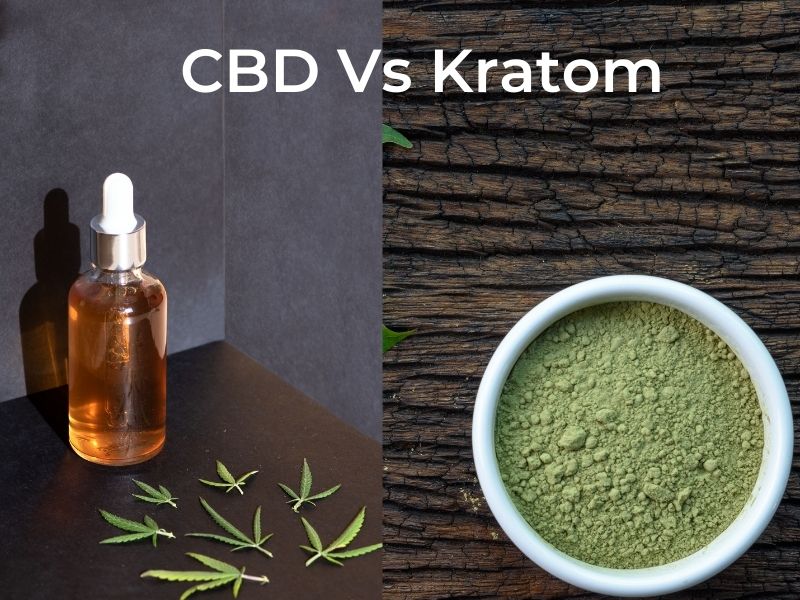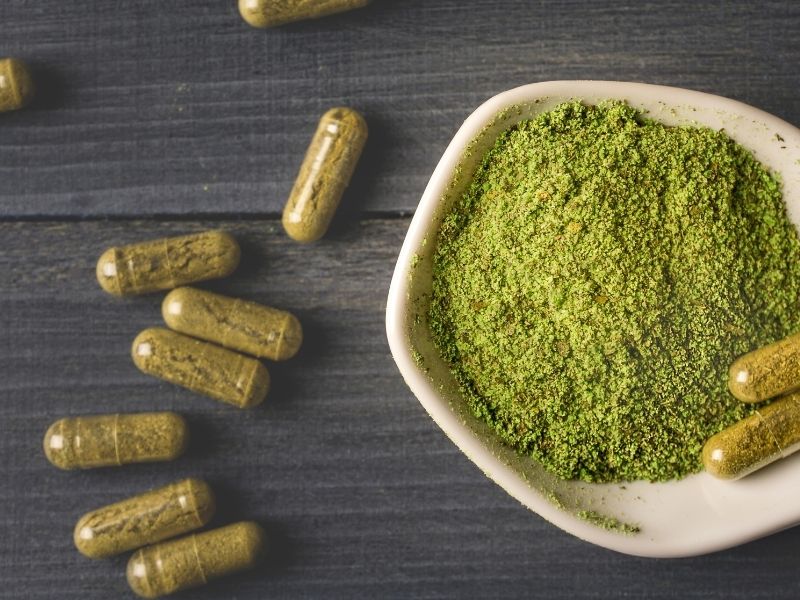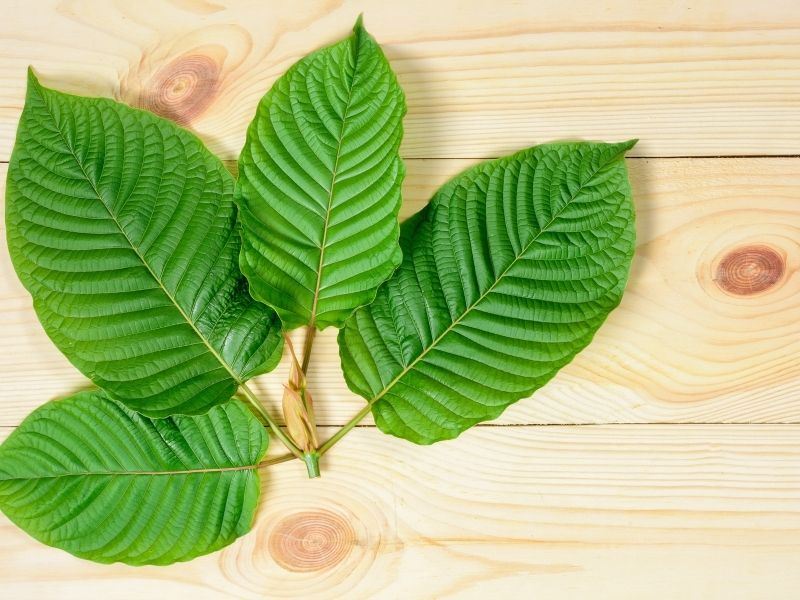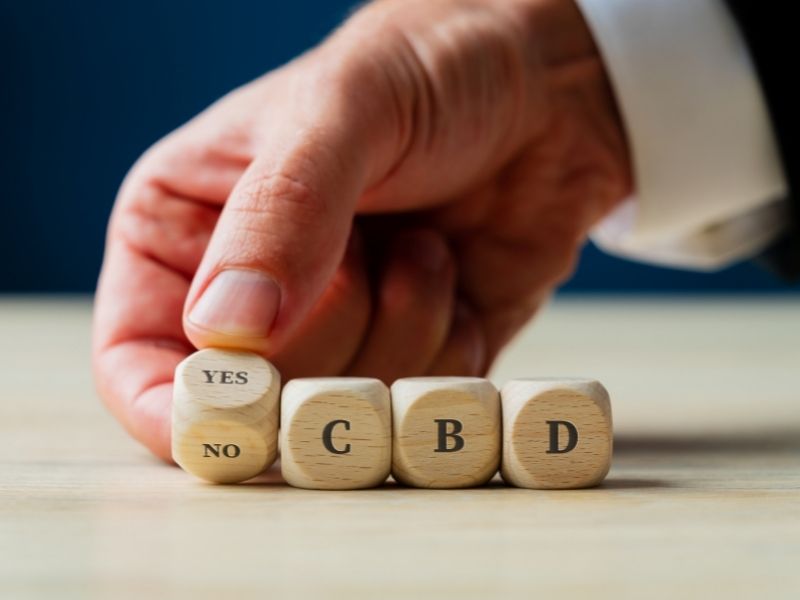
CBD was in the limelight a few years back, with the praises of its long list of potential benefits and concerns over the possible health impacts. Now, the latest plant-derived product – Kratom, is facing the same scrutiny. They have been compared to be similar in their beneficial roles, however, they are quite distinct. Kratom works by binding to the opioid receptors in the brain, while CBD interacts with the Endocannabinoid System. CBD is a safe plant-derived compound that has no psychoactive properties, is non-addictive, and shows minor side effects. On the other hand, Kratom is addictive and exhibits severe side effects in users.
The world is switching over to the holistic approach of living and the manufacturers are also bringing innovative solutions to meet up the demands. New herbs and herb extracts are being introduced now and then claiming to be the next best thing. But how do you choose from such a massive array? We have already seen and some have experienced the advantages of cannabis plants and their extracts. Cannabidiol is the most sought-after cannabis extracted elixir for its bountiful psychological and physiological benefits. Kratom is the latest addition to the existing pool of herbal supplements. Even though it has been in use as a medicine for a long time in South-East Asia where it is found, it has gained more popularity in the States over the recent years. But so has the skepticism about legal status and safety.
What is Kratom?
Mitragyna speciosa or Kratom is a variety of trees prevalent in Indonesia, Malaysia, Papua New Guinea, and Thailand of South-East Asia. It has been used traditionally as an opium substitute, and medicine as well. It belongs to the same family (Rubiaceae) as that of the coffee and exhibits stimulatory effects. Apart from poppy seeds and Akuamma seeds, Kratom is the only other natural source of opioid alkaloids. Its usage has been similar to that of cannabis in its place of cultivation but it hasn’t been as popular.
How is it used?
Kratom doesn’t need to be heated for activation, therefore, making it convenient for usage. It can be taken raw in the form of a capsule, chewed directly, absorbed in tea, or smoked. It can also be mixed with food products such as yogurt for easy consumption. Generally, it is dried, grounded, and then sold as capsules. The leaves can also be used to prepare an extract that has a longer shelf life than the dried version.
What About Kratom Flower?
Even though Kratom trees bear distinct yellow flowers that later turn into fruit, they cannot be used directly to gain therapeutic benefits. The reason is that the fruit is not edible and quite bitter. Furthermore, the time and efforts required to pick it and ship it to the States are quite expensive and time-consuming. In addition, it has an alkaloid (7-hydroxyspeciociliatine) that is an opioid agonist.[4] Kratom flowers are harvested for the collection of seeds only as most of the desired products are extracted from the leaves.
Active Components of Kratom
According to some studies, kratom works on multiple levels to produce effects in the body.[1] The leaves of the kratom plants have at least 25 alkaloids that are responsible for their beneficial properties. Out of these 25, mitragynine (MG) and 7-hydroxymitragynine (7-HMG) are the indole alkaloids behind the analgesic properties of kratom. MG appears to be healing while 7-HMG is responsible for the psychoactive effects. They bind with the same receptors in the brain and body as opioids. MG also exhibits stimulatory effects by interacting with other receptors.[2]
Side Effects
Although the use of kratom sounds promising, it comes with some drawbacks.
- The side effects are similar to those of opioids – vomiting, nausea, stomach aches, decreased appetite, itching, and dryness of the mouth.
- It may also result in severe health impacts such as seizures, liver damage, arrhythmia, and psychosis.
- Its use with other narcotics may result in death because Kratom can alter the metabolism of many substances rendering them more harmful.
- It has the potential to be abused because of the mind-altering effects. A study showed participants exhibited signs of withdrawal.[3]
- The additives used in Kratom supplements have been a big concern because of the uncertain collaborative effects they may result in.
Legal Status
The potential of abuse and the side effects similar to opioids alerted the Drug Enforcement Administration (DEA) and Food & Drug Administration (FDA), which led to the suggested categorization of Kratom as a Schedule I Drug. However, their recommendation has not yet been approved. But many states like Alabama, Tennessee, and Indiana have made Kratom illegal. Similarly, its prohibition is under process in some American cities – Sarasota, San Diego & Denver.
How Is CBD Different?
Cannabidiol or CBD is a naturally occurring cannabinoid present abundantly in the industrial hemp plant. Cannabis sativa or industrial hemp has a low content, less than 0.3%, of the psychoactive component tetrahydrocannabinol or THC, making it legal federally under the 2018 Farm Bill. CBD is also present in marijuana in trace amounts that are extractable but won’t be considered legal in all the states.
It works by interacting with the endocannabinoid system and its various receptors distributed throughout the body.
- The full-spectrum extract contains other naturally occurring minor cannabinoids and terpenes.
- For those who wish to consume only CBD, there are CBD isolates available that contain only CBD and no other biological component.
- The other accompanying compounds work synergistically to create an entourage effect and maximize CBD’s availability for endocannabinoid receptors.
- Many people believe that CBD is less effective when taken in pure form.
- Full-spectrum CBD may include up to 0.3% THC which is under legal limits.
Side Effects
According to the World Health Organization, CBD appears to be non-addictive and non-psychoactive. (Read more on this here – Is CBD Addictive?)
CBD may help in managing the withdrawal symptoms from other addictions.[5] Some common side effects that are experienced by some people are – dryness of the mouth, nausea, vomiting, dizziness, diarrhea, changes in appetite or mood. It may also interact with certain medications. Therefore, it is advised to start using them without consulting your doctor. Especially if you are on any prescription drugs.
Legality of CBD
The 2018 Farm Bill states that any CBD product extracted and prepared from an industrial hemp plant or the Cannabis sativa will be considered legal at the federal level provided it has less than 0.3% THC. No further specifications have been provided. In addition, some states have different regulations for CBD products that do not align with the federal guidelines. Which leaves the legal status of CBD and its products in a gray area. To know if cannabidiol is accessible in your region, check your local jurisdiction’s laws regarding Cannabis products.
CBD-Kratom Comparison Chart
Regardless of the similar results sometimes, CBD and Kratom are quite distinct on the molecular level. Both of these differ on biochemical grounds. While Kratom is made of alkaloids mitragynine and 7-hydroxymitragynine, CBD is a potent component of the industrial hemp plant.
| Scope | Cannabidiol | Kratom |
| Extracted From | Flowers, Leaves, and Stems of the Cannabis sativa plant (industrial hemp) | Leaves of the Mitragyna speciosa plant |
| Origin | United States | South-East Asia |
| Mode of Action | Interacts with the Endocannabinoid System | Interact with the Opioid receptors of the brain |
| Psychotropic | No | Yes |
| Indications | Many ailments, both physiological and psychological | Mainly for psychological issues, and some physiological conditions |
| Side Effects | Few mild side effects that are manageable | Side effects ranging from mild to severe |
| Potential for Abuse | Non-addictive | Addictive |
| Legal Status | Legal under Federal Laws when derived from Hemp plant and has less than 0.3% THC | Not completely legal; has been banned in many states; some states are in favor of prohibiting its use |
| Availability of Scientific Evidence | Sufficient amount of data available to back the touted benefits | Little to no research is available to ensure safety |
Can CBD and Kratom be Used Together?
Even with the differences listed above, these two potent compounds can work in harmony to uplift your overall health. Because of their unique biochemistry and means of working inside the body, they complement each other naturally. There are many options available in the market that have combined these two like CBD oil and Kratom extracts.
However, the CBD and Kratom combination may not be for everyone. Everyone’s body may react distinctively to this combination. It would be safe to start with the lowest doses together to measure how your body responds. And then, the dosage can be modified as per the requirement. Most importantly, if you feel the Kratom and CBD combination is not serving the purpose or you feel any discomfort, cease its use immediately and seek professional help.
With such drastic differences between CBD and Kratom, and inadequate scientific data for Kratom, the CBD-Kratom combo may not be an acceptable concept for many. There is no sure-shot way to decide if this works effectively for everyone.
How To Buy Them?
There are many shops and reputable online merchants that sell Kratom and CBD-infused products. Moreover, CBD products are also available in cannabis dispensaries. The crucial thing before buying them is to check the source of origin and reading the label carefully for ingredients or any misleading information. And for the online retailers, it is recommended to look for third-party lab reports for the potency, quality, and residual contents.
You can check our CBD products here. These are derived from US-grown hemp with the use of the latest technological advances to ensure the high potency of the end product. Additionally, our high-end products are bottled and packed in a GMP-certified facility. Divine Hemps has a wide range of strengths and flavors to choose from.
- Our cotton candy-flavored CBD Tincture with 2500 mg strength is a hot selling product.
- The recent addition to our product range is CBD-infused candles, available in five soothing fragrances. As these melt away, you will be left with a pool of oil that is intended for massaging so that your skin can imbibe all the goodness of CBD.
- Also, don’t miss our CBD Gummies Jar that can be customized as per your flavor and strength requirement.
Kratom Vs CBD – The Final Verdict
Not all herbs can constitute a safe remedy. With an ample amount of acclaim, user acknowledgments, and scientific data, CBD is a safer choice. However, it should be noted that the realm of Kratom is still in its baby stage. Research focuses on the public interest, and with the obsession over Kratom, substantial investigative results can be expected soon.
References
- Eastlack SC, Cornett EM, Kaye AD. Kratom-Pharmacology, Clinical Implications, and Outlook: A Comprehensive Review. Pain Ther. 2020 Jun;9(1):55-69. doi: 10.1007/s40122-020-00151-x. Epub 2020 Jan 28. PMID: 31994019; PMCID: PMC7203303. https://www.ncbi.nlm.nih.gov/pmc/articles/PMC7203303/
- https://www.drugabuse.gov/publications/drugfacts/kratom
- Yusoff NH, Suhaimi FW, Vadivelu RK, Hassan Z, Rümler A, Rotter A, Amato D, Dringenberg HC, Mansor SM, Navaratnam V, Müller CP. Abuse potential and adverse cognitive effects of mitragynine (kratom). Addict Biol. 2016 Jan;21(1):98-110. doi: 10.1111/adb.12185. Epub 2014 Sep 28. PMID: 25262913. https://pubmed.ncbi.nlm.nih.gov/25262913/
- Mariko Kitajima, Kaori Misawa, Noriyki Kogure, Ikram Said. A new indole alkaloid, 7-hydroxyspeciociliatine, from the fruits of Malaysian Mitragyna speciosa and its opioid agonistic activity January 2006Journal of Natural Medicines 60(1):28-35 DOI:10.1007/s11418-005-0001-7 https://www.researchgate.net/publication/225656701_A_new_indole_alkaloid_7-hydroxyspeciociliatine_from_the_fruits_of_Malaysian_Mitragyna_speciosa_and_its_opioid_agonistic_activity
- Renard J, Loureiro M, Rosen LG, Zunder J, de Oliveira C, Schmid S, Rushlow WJ, Laviolette SR. Cannabidiol Counteracts Amphetamine-Induced Neuronal and Behavioral Sensitization of the Mesolimbic Dopamine Pathway through a Novel mTOR/p70S6 Kinase Signaling Pathway. J Neurosci. 2016 May 4;36(18):5160-9. doi: 10.1523/JNEUROSCI.3387-15.2016. PMID: 27147666; PMCID: PMC4854973. https://pubmed.ncbi.nlm.nih.gov/27147666/









